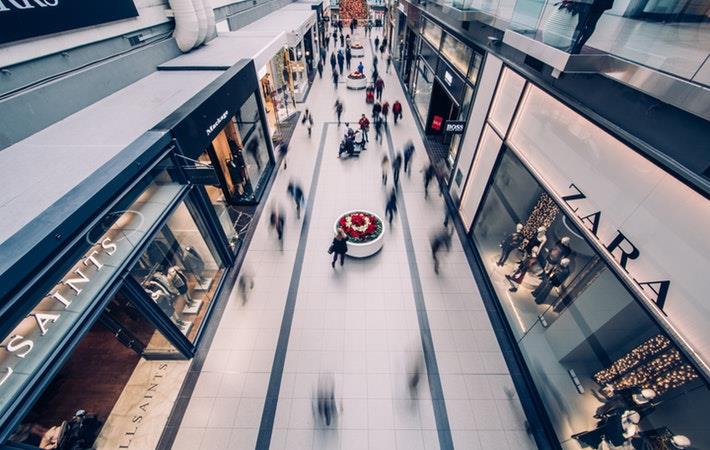85 new malls to open in India in next 5yrs: Anarock Retail

There is a viewpoint that traditional brick-and-mortar retail is going the way of the dinosaur because e-commerce has been so successful. However, we are only looking at the beginning of India’s mall era, and it is more than evident that malls will not lose their sheen in this country, says Kejriwal.
Explaining the reason for his strong belief in the growth of Indian mall story, he says that unlike ‘couch potato’ e-commerce shopping, malls offer an experience... a touch-and-feel benefit which online shopping cannot. Also, going to a mall becomes an outing for the family and friends, often coupled with a meal at the food court and a movie at the cineplex. All this in air-conditioned comfort, escalators and lifts connecting everything to the parking below, and scrupulously cleaned sanitary facilities at all levels. The massive Indian middle class loves this experience and online retail is unlikely to put malls in the shade in India anytime soon.
However, the impact of e-commerce cannot be denied. About 300 million Indians use the internet today, and these people may not go to a mall if they need just a few things and for which they can wait a few days. It is because the commute to and from a mall is an important factor considering that going to the car park and waiting for to take the elevator is a daunting task. At the same time, Indians are also quite open to deferring smaller purchases for the weekends, when they can couple the shopping with other activities which a mall can offer.
At present, online shopping portals offer more variety and deeper discounts. However, it is known that the deep discount ethos will eventually fade away. The e-com portals have been investing heavily into garnering a loyal customer base, and margins have been thin at best.
In the West, online retail has proved to be a major disruptor for physical retail—especially given the fact that there is no dearth of things for families to do on weekends. However, that may not be the case in India, where cities have developed haphazardly, open spaces are vanishing, and public transport is often shaky and unreliable. In such a scenario, a visit to a clean, visually vibrant and centrally air-conditioned mall is a major attraction.
Hence, both online shopping and physical retail will continue to coexist in India, without impacting each other too much, feels Kejriwal.
On the growing spread of malls in India, he says, “Cities that have seen maximum malls include Gurgaon, Noida, Greater Noida and Delhi in NCR, Mumbai, Chennai, Bengaluru and Pune. Over the next five years, nearly 85 malls are expected to come up in India, and more than 30 new malls accounting for nearly 14 million sq ft area are expected to open just in the top eight cities by 2020.”
Low vacancy levels and high rentals in tier-I cities are now also paving the way for retail expansion in tier II cities like Lucknow, Coimbatore, Chandigarh, Mangaluru and Ahmedabad, to name a few. In fact, sensing immense opportunities and easy penetration into the Indian retail diaspora, overseas retailers are now expanding not just in metros but even tier-2 cities namely Ahmedabad, Chandigarh, Lucknow and Jaipur. This has led to mushrooming of malls all across the country, he said.
“We are definitely not looking at a deathbed scenario here—as a matter of fact, just the opposite. However, like every other real estate vertical in India, retail has also had to evolve with the times in order to retain its allure,” said Kejriwal.
It has become increasingly evident that no mall in India today can depend solely on shopping as its prime source of revenue-generation and footfalls. Developers have understood that they need to transform their malls into community spaces to stay relevant to today’s far more discerning customers.
Besides seeking a holistic shopping experience, consumers want to be comfortable and have something that inspires them to stay longer and, more essentially, persuades them to return. This has led to a constant effort by Indian mall operators to provide the required specialised experience.
Thus, most malls are striving to become prominent ‘shoppertainment’ locations. Today’s top-performing shopping malls are mixed-use businesses that incorporate social entertainment options, provide unique appeal along with certain depth in the shopping experience, and are in prime locations that are easily accessible by both public and private transport.
Size also matters. Since large malls are better able to incorporate all the features required for successful operations, they tend to do better than the smaller ones. For instance, the footfalls in Total Mall at Sarjapur Road in Bengaluru are far less than Phoenix Market City in Whitefield area. The latter is much larger and provides a complete ‘experience’ including shopping, entertainment, restaurants, movies etc.
“Despite the incessant consumer appetite for malls in India, many malls did not work out. This can happen for a variety of reasons—the wrong location lacking public transport access, insufficient or unscientific parking arrangements, lack of research for what kind of retailers will work in a given micro-market (leading to an unsuitable tenant mix), lack of a food court, etc.,” said Kejriwal.
The evolution of malls in India is a continuing phenomenon. The Indian retail industry is in the midst of a remarkable learning curve, which first and foremost involves ‘unlearning’ the old ways first. Organised retail in India as well as globally is transforming at such a rapid pace that no player can really afford to rest on past laurels. “The ways and means of doing retail business today will have transformed completely in five years’ time, so the retail industry must adapt constantly. In a decade from today, we will by necessity see far more successes than failures,” Kejriwal adds. “This is because building and operating shopping malls call for such massive investments that messing around with unproven concepts is far too risky.” (RKS)
Fibre2Fashion News Desk – India
































-Ltd..jpg?tr=w-120,h-60,c-at_max,cm-pad_resize,bg-ffffff)





.jpg?tr=w-120,h-60,c-at_max,cm-pad_resize,bg-ffffff)
.jpg?tr=w-120,h-60,c-at_max,cm-pad_resize,bg-ffffff)






